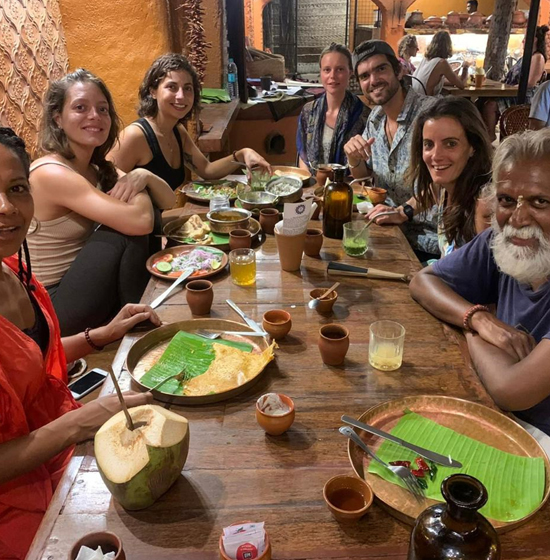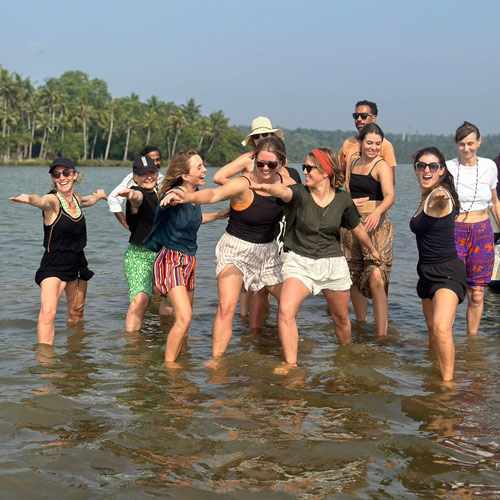Congratulations! You have just graduated from your Yoga Teacher Training (YTT) and it is an experience, a life-changing one, which has enhanced your practice and sparked your desire to teach. But now what? When you get off the mat and into the position of an instructor, you may be excited and confused at the same time on how to go about changing position as a student to a teacher. Fear not! This is the ultimate guide to your blog post, and you are going to have some practical advice, inspirational thoughts, and all the steps you need to know in launching your teaching career with confidence. And whether you are daydreaming about teaching classes in a studio or developing online material at home, we will demonstrate to you how to use your new knowledge and spread it around the globe. Then spread that mat–hurrah, we will make this adventure!
Introduction to YTT Certification and its Importance
Yoga Teacher Training in Kerala is not simply a notch in a belt but your bridge to introducing yoga to the world and its power to change lives. You are done with your YTT and have spent time, energy, and passion on learning how to teach. But what comes next? Life as a teacher can be an experience of both fear and excitement.
You have valuable knowledge that would make a difference in life, yet you need to be guided on how to get into the mat as an instructor. The ability to be able to shape your own course of action following your certification is important whether you have aspirations to be leading classes in a studio or organizing retreats around the world. You want to become a teacher but not sure how to get started confidently and clearly? Let us arouse your interest in the process!
Understanding the Requirements for Teaching After YTT Certification
Once you finish YTT certification, it is necessary to learn the requirements of teaching. The regulations of yoga instructors in different regions might be different. You can put yourself on the right track by familiarizing yourself with these local laws.
In addition to the legality, you can think of such aspects as insurance and first aid training. Holding liability insurance will save you and your students in the event of accidents during classes. The first aid skills come in handy when one works in a physical setting.
Next, think about experience. A lot of studios would give preference to teachers that can prove their skills by the number of hours of practice or prior teaching experiences. Observing experienced teachers could give a clue as to how to organize the classes and use the effective communication methods.
Finally, it is important to keep a personal growth commitment upon YTT certification. Participation in workshops or other courses can improve your skills and keep you in touch with the trends in the industry, increasing your teaching skills over time.
Building a Strong Foundation: Practicing and Mastering Your Skills
When you are through with your YTT Certification, it is critical to establish a solid base. It is not the end of the journey after the final class.
Find some time to practice more. It may involve experimenting with various styles or specializing in specific modalities such as alignment, breathwork or meditation.
Think about the journal of your experiences and observations. Recording what resonates may be helpful in developing as a practitioner and teacher.
Take lessons under experienced teachers. Their practices will give me ideas on how different teaching strategies and classroom management can be implemented.
Do not be afraid to seek peer feedback, or mentor feedback. Suggestive criticism is priceless in perfecting your ability.
Keep in mind, with time and patience mastery. Also push yourself regularly in addition to giving yourself time to grow without putting pressure on it.
Also Read: 200 Hour Yoga Teacher Training in Kerala
Creating Your Teaching Style and Niche
Finding your unique teaching style is a journey of self-discovery. It involves reflecting on your personal practice and understanding what resonates with you the most. Experiment with various class formats, such as vinyasa, hatha, or restorative yoga.
Explore different themes that align with your beliefs and passions. Are you drawn to mindfulness, alignment-focused classes, or perhaps a more playful approach? Let these choices guide how you present yourself in front of students.
Identifying your niche can set you apart from other instructors. Consider demographics like age group or fitness levels—who do you feel inspired to teach? Tailoring your classes for specific audiences enables deeper connections and fosters community.
Your voice matters too. Share anecdotes from your own experiences to build rapport. Authenticity will shine through when you’re comfortable expressing who you are as an instructor. Embrace this process; it’s all part of becoming the teacher you’re meant to be.
Networking and Marketing Yourself as a Yoga Teacher
Yoga teachers need networking to develop their presence. The first step is to establish contact with fellow teachers and learners in your neighborhood. Visit presentations, seminars, parties where you can find people with similar interests that can help you.
Use social media well. Post helpful information that will appeal to prospective students- like advice on poses or mindfulness practices. True interaction will build a personal brand that will win followers.
Not to be underestimated is the strength of word-of-mouth referrals. Invite students who are satisfied to advertise your classes. Bonuses on inviting friends.
Think about partnering with local companies, e.g., gyms or fitness centers, to increase your coverage. Mutually beneficial joint promotions can open new markets to you.
The formation of relationships in the yoga fraternity empowers your network besides improving visibility in a competitive sector. Your personal voice will appeal to people who seek counsel on their path to wellness.
Finding Opportunities to Teach: Yoga Studios, Corporate Settings, Retreats, etc.
New teachers can find exciting new opportunities by exploring different avenues through which they can teach yoga. Begin by networking with local yoga studios. Most of them are willing to introduce new talent into their classes and therefore do not be afraid to introduce yourself and declare your interest.
There is also a special opportunity in the corporate environment. Organizations are becoming more aware of the value of wellness initiatives among the workforce. You can create a niche in this rising market by providing lunch-hour classes or workshops.
Another empowering experience is retreats. They offer an immersive experience where you are able to indulge in your passion, even as you enhance your practice alongside those participants.
Also think about volunteering in community centers or wellness fairs. These environments give you the opportunity to access different populations and establish valuable relationships.
Online platforms are not to be neglected, either; virtual teaching increases your audience manifold and gives a freedom and creativity to any place in the globe to conduct lessons.
Challenges and Tips for New Teachers
Starting your journey as a yoga teacher can be both exciting and daunting. One of the biggest challenges new instructors face is building confidence in their teaching abilities. Practice makes perfect; consider leading small classes with friends or family to ease into the role.
Another hurdle is managing different student needs and skill levels. It’s essential to foster an inclusive environment where everyone feels welcomed, regardless of their experience. Tailoring modifications for poses can help you connect better with your students.
Marketing yourself can also feel overwhelming at first. Start by using social media platforms to showcase your unique style and connect with potential students. Building a personal brand takes time but it pays off when you attract those who resonate with your approach.
Lastly, don’t forget about self-care. Teaching yoga requires energy and passion, so make sure you’re nurturing yourself along this rewarding path.
Continuing Education and Growth in Your Teaching Career
As a yoga teacher, your journey doesn’t end with YTT certification. Continuing education is vital for personal and professional growth.
Consider attending workshops and advanced courses. These can deepen your knowledge of anatomy, philosophy, or specialized styles like restorative or aerial yoga. Each experience enriches your teaching toolbox.
Explore online platforms offering webinars and training modules as well. They provide flexibility to learn at your own pace while keeping you updated on the latest trends in the yoga community.
Networking with other instructors can also open doors to new ideas and methods. Joining professional organizations offers access to resources that keep your skills sharp.
Remember, every class you teach is an opportunity for growth too. Reflecting on feedback from students helps refine your approach, ensuring continuous improvement in both technique and presence.
Conclusion: The Fulfillment of Sharing Your Knowledge through Teaching Yoga
Being a yoga teacher is a very satisfying experience when you have your YTT certification. You get a rare chance to educate and pass your passion and learning to others as you become an instructor. The knowledge you have developed in the course of your training is a strong base of motivation to students in their wellness quests.
Being a guide takes more than just leading the way, it is also about connection, community, and mindfulness. Both classes provide an opportunity to change lives to become better as individuals become stronger physically and mentally. Be passionate and genuine about this role.
As you build your teaching style and niche keep in mind that each experience will add to your development as a teacher. Difficulties might also come in between, but they tend to be stepping blocks to a higher level of knowledge and mastery of yoga practice.
Your lifelong investment in learning will not only be helpful to you but even to those who come and learn you. The fulfillment that comes with sharing what you have learned under the YTT certification is immeasurable not only to yourself but also to every student that leaves the course feeling empowered by his or her practice.
Finally, it is about teaching yoga, which can give people the opportunity to discover themselves to achieve a sense of balance in their lives. You have made the initial step, which is finishing your YTT certification, but now it is high time to take this exciting journey with open arms.











